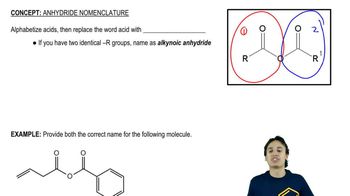Show how you would use appropriate acyl chlorides and amines to synthesize the following amides.
(c) cyclohexanecarboxamide
(d)
 Verified step by step guidance
Verified step by step guidance Verified video answer for a similar problem:
Verified video answer for a similar problem:



 9:32m
9:32mMaster NAS - The Three Rules with a bite sized video explanation from Johnny
Start learning